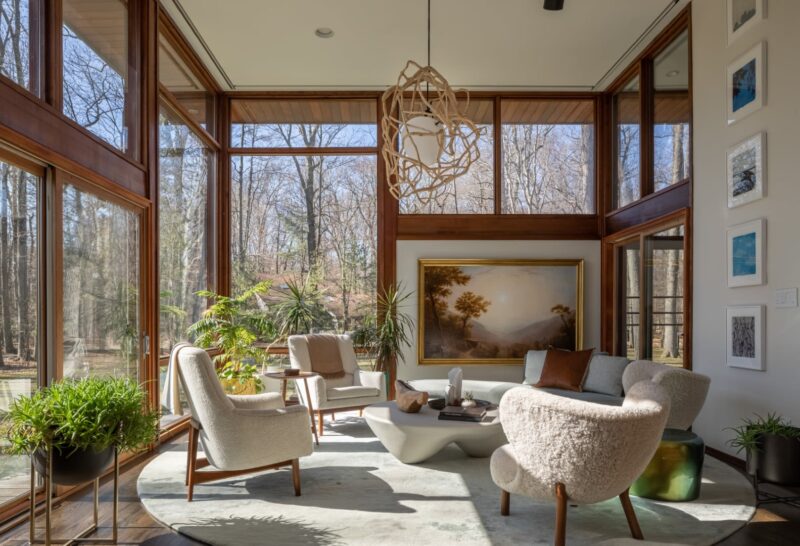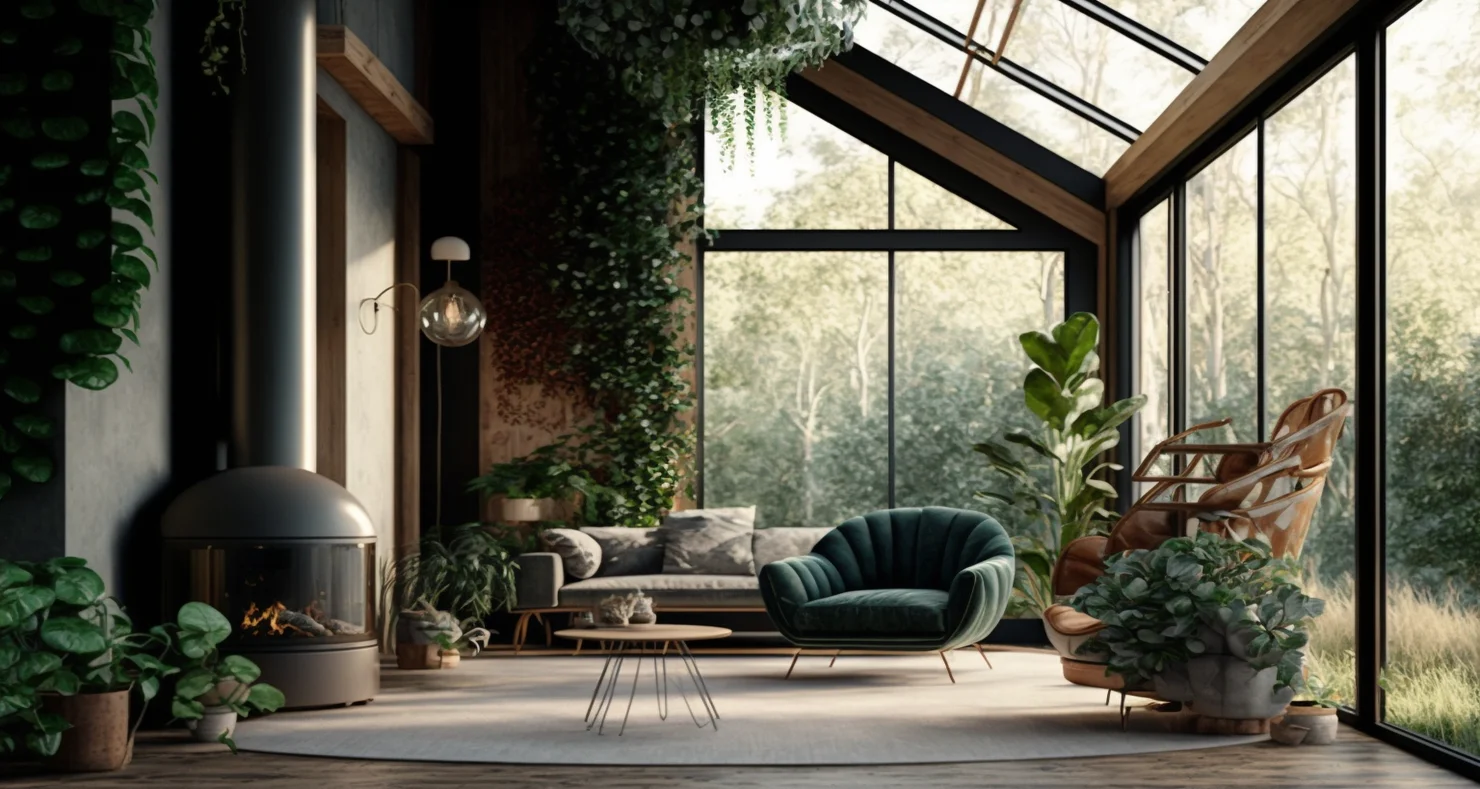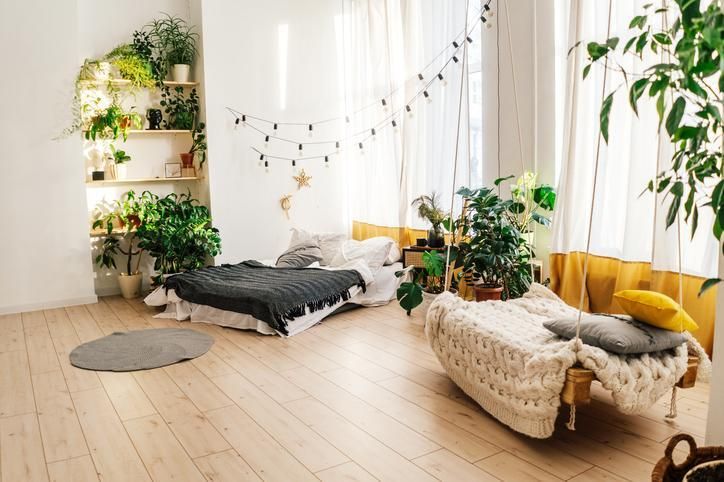Have you ever craved the feeling of a gentle breeze on your skin or the calming sound of birdsong while relaxing in your own home? We humans have an innate connection to nature, and incorporating natural elements into our living spaces can have a profound impact on our well-being. This concept is at the heart of ‘biophilic design’, a rapidly growing trend that focuses on creating spaces that enhance health by mimicking the natural world.
Imagine waking up to sunlight streaming through your window, surrounded by lush greenery and natural materials that soothe the senses – or enjoying a cup of tea on your balcony, feeling connected to the outdoors even in an urban setting. Bringing the outdoors in isn’t just about aesthetics; it’s about creating a living environment that fosters a sense of calm, reduces stress, and boosts well-being.
In this article, we’ll explore various ways to integrate nature into your home design, using biophilic principles and practical tips. From increased use of natural light to mixing the beauty of plants with natural materials, we’ll equip you with the tools to create your own personal oasis.
Connecting with Nature Through Design

Biophilic design goes beyond simply placing a few plants in your living room. Its philosophy encourages us to create spaces that evoke the feeling of being in nature. Here are some key principles of biophilic design that you can incorporate into your home:
Maximising Natural Light
Natural light not only brightens your space but also boosts mood and energy levels. Large windows, skylights, and light shelves can all increase your natural light intake. Also, consider furniture placement that avoids blocking windows to allow sunlight to flow freely.
Bringing in the Views
Large windows or sliding glass doors that open onto balconies, patios, or gardens create a strong connection with the outdoors. Even in urban environments, freeing your windows of heavy curtains or blinds can give you a better sense of contact.
Use of Biophilic Patterns
Biophilic design uses natural patterns and shapes to stimulate a sense of calmness and familiarity. Consider including organic shapes like curves and waves in your furniture choices, artwork, or even wall textures. Natural patterns can also be found in textiles with floral or leaf motifs, or wallpapers with wood grain textures.
The Power of Plants

Plants aren’t just decorative elements in biophilic design; they’re living ambassadors of the natural world, offering many benefits for our physical and mental health. Here’s how they can enhance your space:
- Improved Air Quality
Plants act as natural air purifiers, absorbing pollutants and releasing fresh oxygen. This can improve indoor air quality, especially beneficial for those with allergies or asthma. - Stress Reduction
Studies have shown that interacting with nature, even indoors through plants, can significantly reduce stress levels and promote feelings of relaxation. The calming presence of greenery can create a more peaceful and restorative environment. - A Touch of Vibrancy
From the lush foliage of a Monstera Deliciosa to the vibrant blooms of orchids, indoor plants offer a variety of textures and colours that can enhance any design scheme. - Boosting Creativity and Focus
Research suggests that surrounding yourself with plants can improve creativity and concentration. This makes them ideal additions to home offices or study areas.
Creating a Comfortable Oasis All Year Round

While biophilic design helps us connect with nature through light, plants, and natural materials, there’s another aspect to consider for year-round enjoyment: maintaining a comfortable temperature. This can be particularly challenging in colder climates where harsh winters might limit the ability to enjoy fresh air ventilation.
One solution is to consider installing an air to air heat pump in the UK. These heat pumps are a sustainable solution for creating a comfortable and nature-inspired environment. Here’s how they can help:
- Year-Round Comfort
Air-to-air heat pumps function by transferring heat from outside air to the interior during colder months, keeping your home warm and cosy. In warmer seasons, they can reverse the process, acting as an air conditioner. This allows you to maintain a comfortable temperature throughout the year without compromising on energy efficiency. - Fresh Air Connection
Unlike traditional heating systems, many air-to-air heat pumps come equipped with built-in ventilation features. This allows for a constant flow of fresh air from the outdoors without significant heat loss. - Sustainable Choice
Air-to-air heat pumps are a more energy-efficient alternative to traditional heating and cooling systems. They use a renewable energy source – the ambient heat in the air – decreasing your reliance on fossil fuels and reducing your environmental footprint. This aligns perfectly with the principles of biophilic design, which emphasises a harmonious relationship between humans and nature.
Cultivating Your Personal Sanctuary
Bringing the outdoors in is more than just a design trend; it’s a philosophy for creating a home that nourishes your soul and connects you with the natural world. By incorporating biophilic design principles, you can cultivate a space that promotes relaxation, reduces stress, and enhances your overall well-being.
Remember, no matter how you choose to design your home, make it a place you will love! Start small, experiment with different elements, and personalise your space to reflect your own connection with nature.


